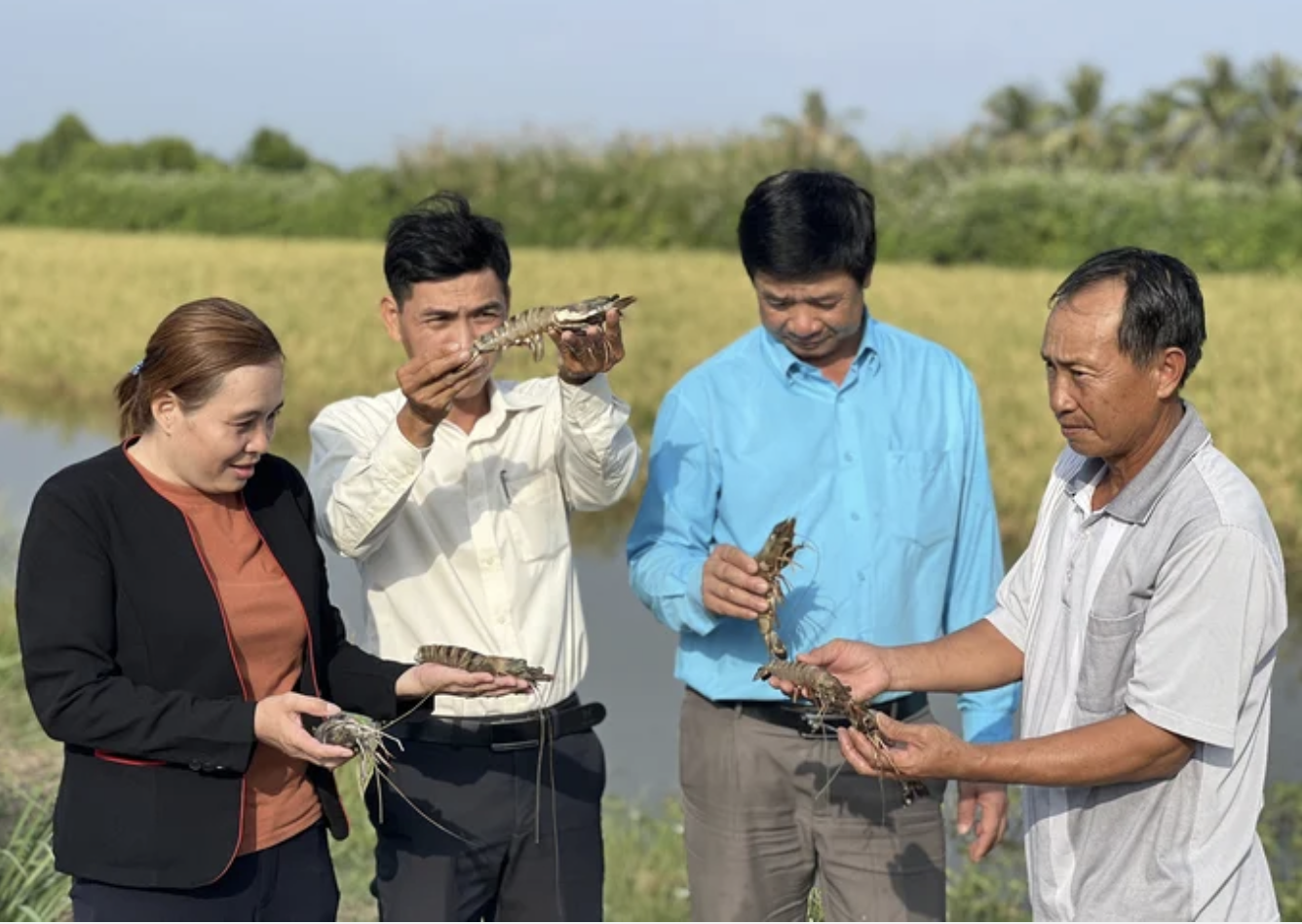
Carbon credits, or natural agriculture, is one of the solutions for countries, including in the Mekong River Delta, Vietnam’s rice granary.
Agricultural economics means use of science and technology, AI, and natural solutions to turn the traditional production process into circular production.
This reduces waste, thus helping cut greenhouse gas emissions and reaching the goal of carbon neutrality.
A national conference discussing resources for natural agricultural solutions in Mekong Delta was held recently. Le Van Quang, CEO of Minh Phu Seafood, said the rice-shrimp farming is an original farming method used in the delta.
The model alternates between rainy and dry seasons. In dry season, the saltwater from the sea flows to the mainland, which turns coastal deltas into ideal environments for shrimp hatchery.
Shrimp can be raised in natural conditions. They don’t need industrial feed, but eat food in the wild. The roots of rice plants can enrich the soil, while straw and paddy grains create a rich source of food for aquatic creatures.
Nutrients, microorganisms, and aquatic animals alternate and grow in the circulation between saltwater and fresh water ecosystems, creating ideal conditions for shrimp and rice to grow.
In the rainy season, when freshwater flows, the fertile land will become rice fields. Nutrients, shrimp feces and floc from shrimp farming can enrich the fields, creating natural organic fertilizer for rice plants to grow.
It is estimated that the rice-shrimp farming model can bring an average yield of 5-8 tons of rice and 300-1,000 kilograms of shrimp.
As such, farmers can earn VND250 million from the model. The figure can be VND500 million or VND1 billion if cultivation succeeds.
Minh Phu said the rotation process between the two seasons (dry and rainy) and two contradictory living environments (shrimp and rice) can create a balance and sustainability for the rice-shrimp model. Each element of the process can be both input and output in a closed, circular production system.
Quang said if farmers follow the current rice-shrimp model, they don’t need capital, because they just need money to buy rice seeds and shrimp breeders.
However, to gain success, farmers should cooperate with each other to create large rice-shrimp fields. If so, farmers will need huge capital to develop infrastructure, about VND1 billion per hectare.
Tam An